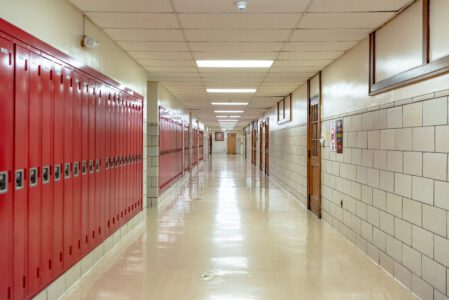As the summer heat rolls in, school districts face a pressing question: should they leave the air conditioning on or turn it off in their buildings during the summer break when the facilities may be unoccupied or have limited usage? This decision has far-reaching consequences, impacting both energy consumption and the potential risks of mold growth and condensation. In this article, we will explore the pros and cons of leaving the air conditioning on or off in school district buildings over the summer.
Leaving the Air Conditioning On
One argument in favor of leaving the air conditioning on during the summer break is the preservation of indoor air quality. Air conditioning helps control humidity levels, preventing excessive moisture that can lead to mold growth and the deterioration of building materials. By maintaining a cool and dry environment, school districts can mitigate the risks of mold, mildew, and related health issues.
Additionally, maintaining a controlled temperature can protect sensitive equipment, such as computers and electronic devices, from the potential damage caused by excessive heat and humidity. This can save schools from expensive repairs or replacements when the new academic year begins.
Another advantage of keeping the air conditioning running is the ability to maintain a consistent temperature. Extreme heat can cause damage to furniture, paint, and other materials within the building. By keeping the temperature regulated, school districts can ensure that the learning environment is comfortable and conducive to student success.
Turning the Air Conditioning Off
Despite the potential benefits, turning off the air conditioning during the summer break also has its merits. The primary advantage is energy savings. Air conditioning accounts for a significant portion of a building’s energy consumption, and leaving it on in unoccupied spaces leads to unnecessary energy usage and increased utility costs. By turning off the air conditioning, school districts can make substantial savings in their energy bills.
Reducing energy consumption aligns with the broader goal of sustainability and environmental stewardship. By minimizing energy usage, school districts can contribute to reducing greenhouse gas emissions, combatting climate change, and setting an example for students and the community.
Potential Risks
While energy savings are desirable, it is crucial to acknowledge the potential risks associated with turning off the air conditioning. High humidity levels can create an ideal environment for mold growth, leading to health hazards and costly remediation efforts. Furthermore, excessive heat and moisture can cause condensation on windows, walls, and other surfaces, potentially leading to water damage, peeling paint, and compromised structural integrity.
Mitigating the Risks
To strike a balance between energy conservation and the prevention of mold and condensation issues, school districts can implement strategies to mitigate the potential risks during the summer break:
- Set higher temperature thresholds: Raise the thermostat to a temperature that maintains humidity control while minimizing energy usage. This approach ensures a comfortable environment while reducing the load on the air conditioning system.
- Dehumidification systems: Install dehumidifiers in areas prone to high humidity to maintain optimal moisture levels and prevent mold growth.
- Regular inspections: Conduct routine inspections during the summer break to identify any signs of mold, water damage, or condensation. Prompt action can prevent further issues and limit the extent of potential damage.
- Improved insulation: Enhance the insulation of the building envelope to minimize heat transfer and reduce the impact of external conditions on indoor temperature and humidity levels.
The decision of whether to leave the air conditioning on or off in school district buildings during the summer break involves careful consideration of multiple factors. While energy savings are important, they must be balanced against the risks of mold growth, condensation, and other potential damage. School districts should implement strategies that allow for controlled humidity levels, regular inspections, and energy-efficient practices to ensure a safe, comfortable, and sustainable learning. If your company or school district needs help navigating the summer heat with your air conditioning needs, reach out to our Building Services Manager, Bill Vervaeke for a one-on-one conversation on how we can help.


